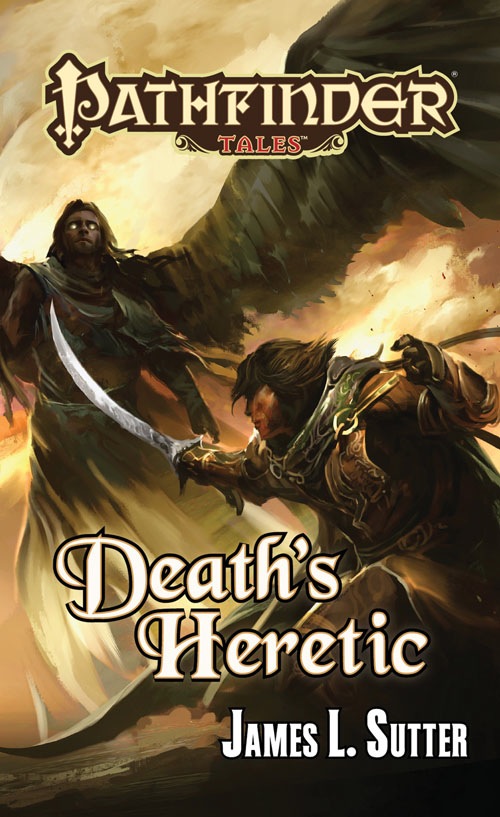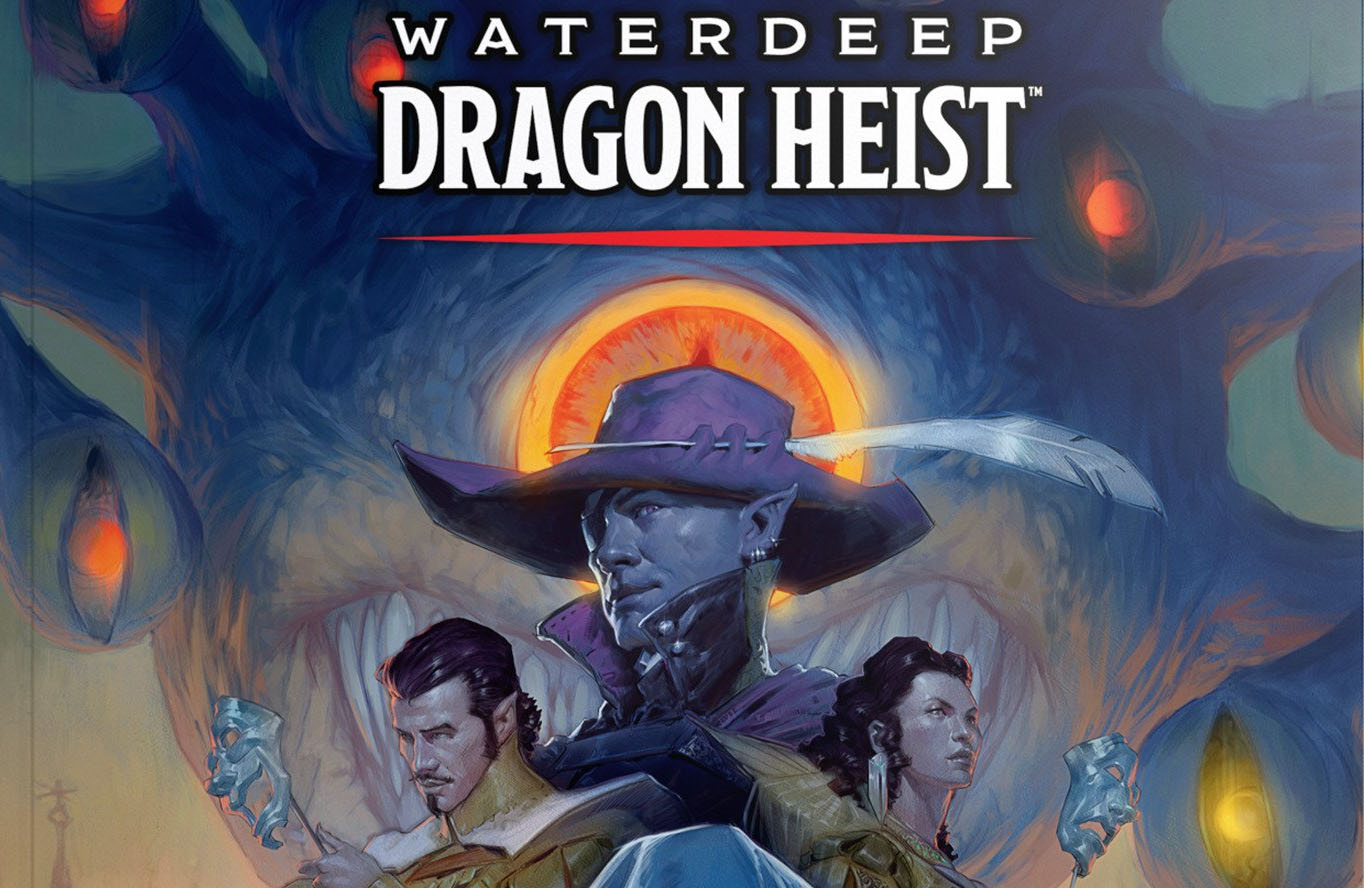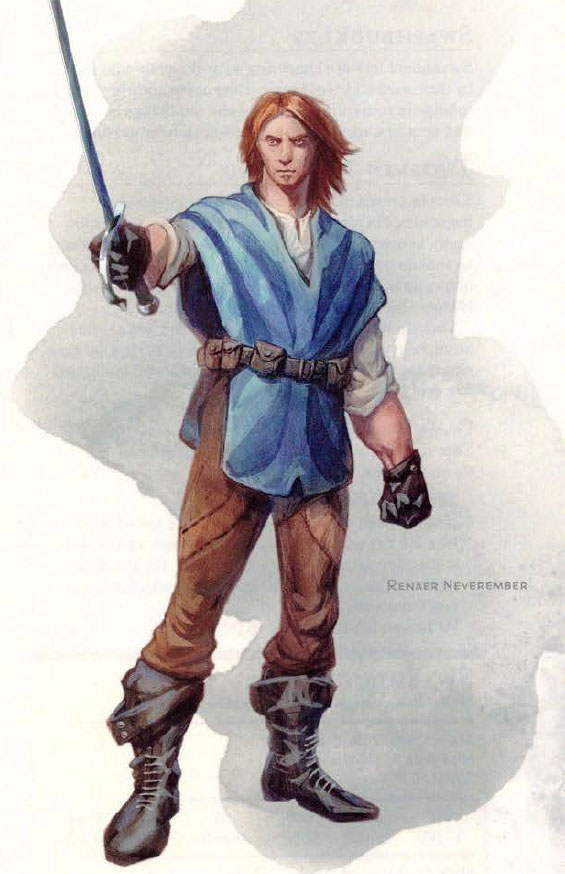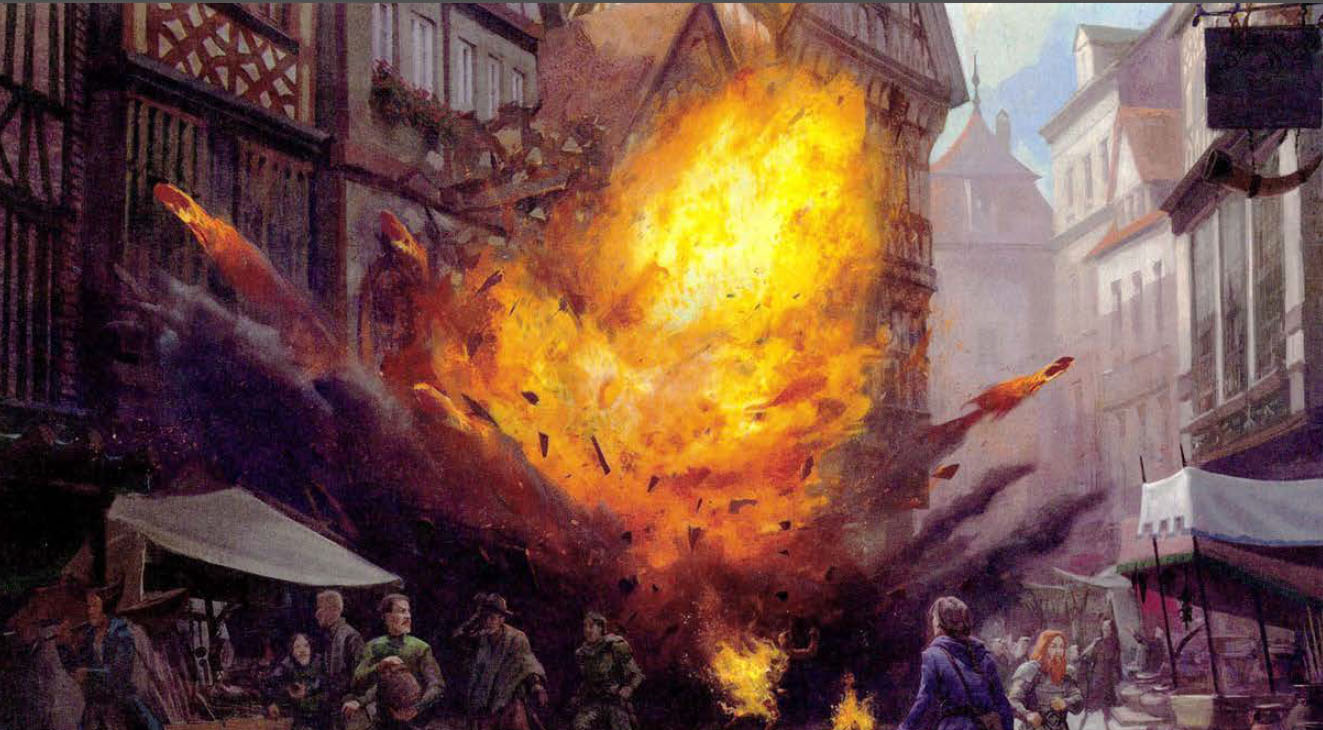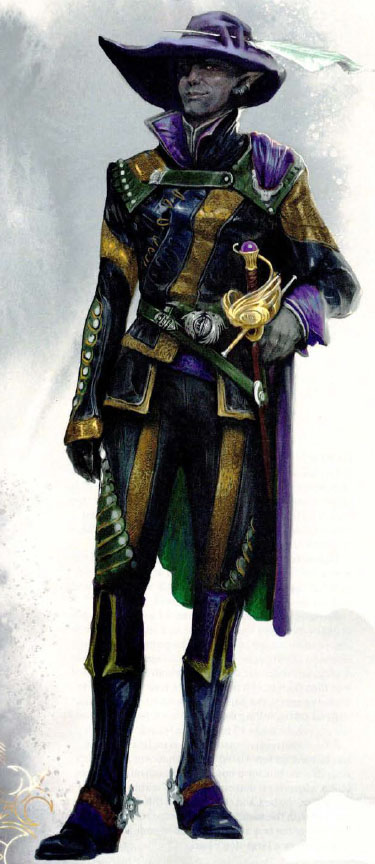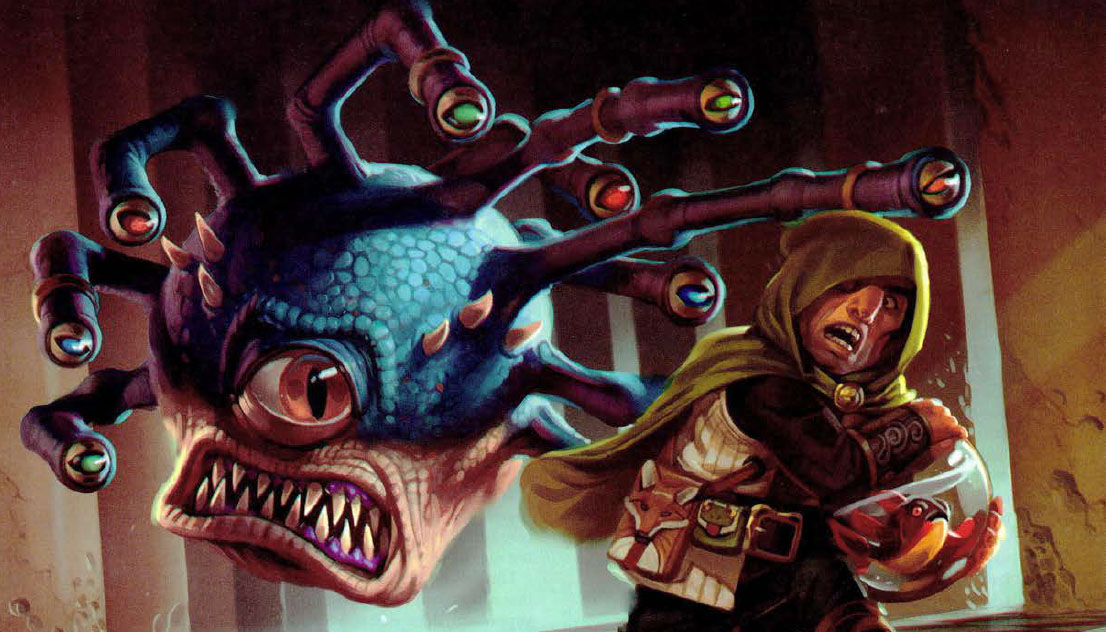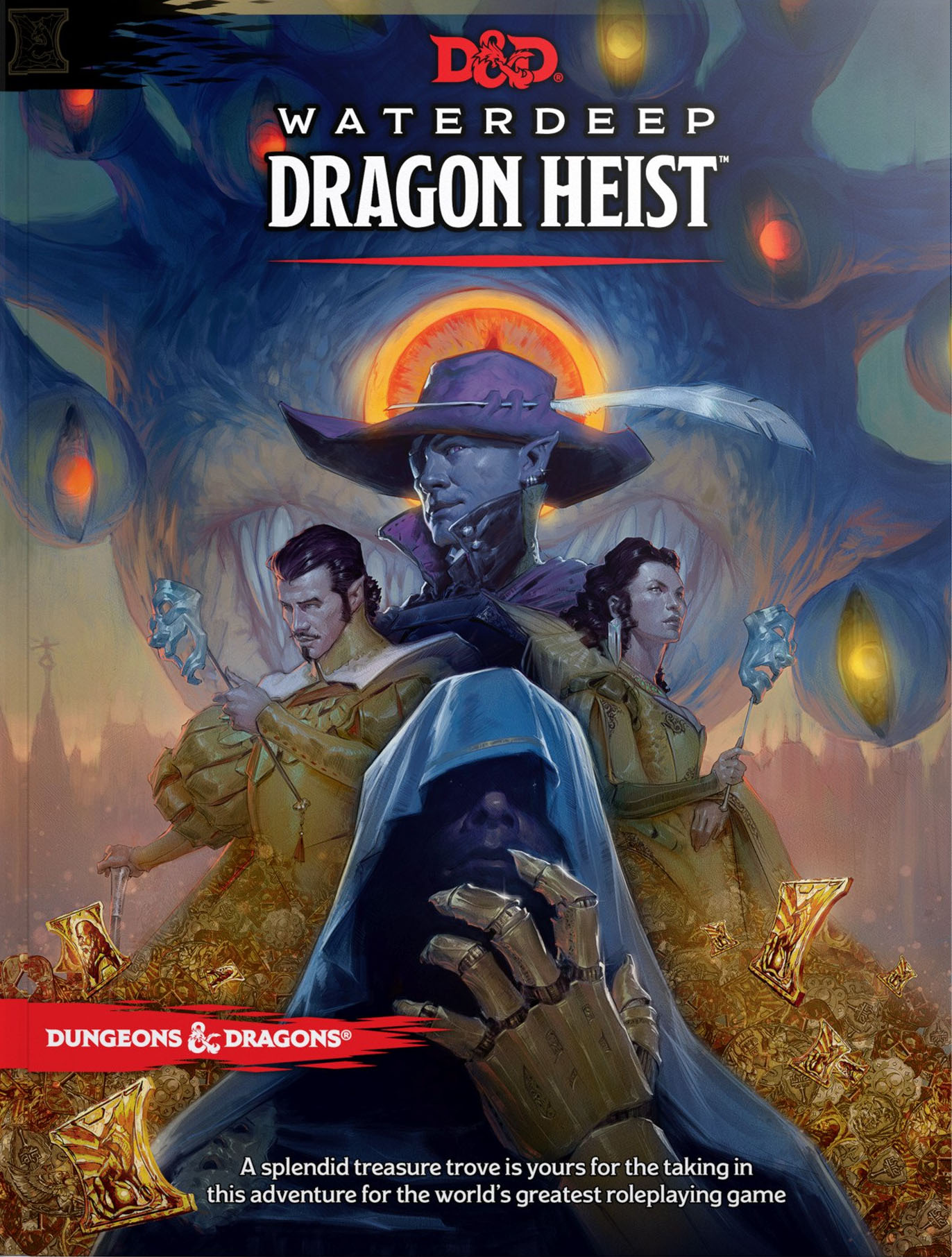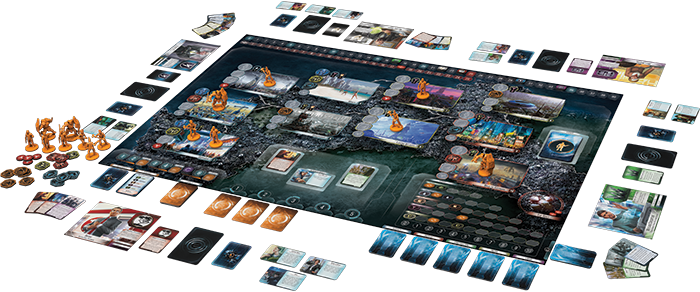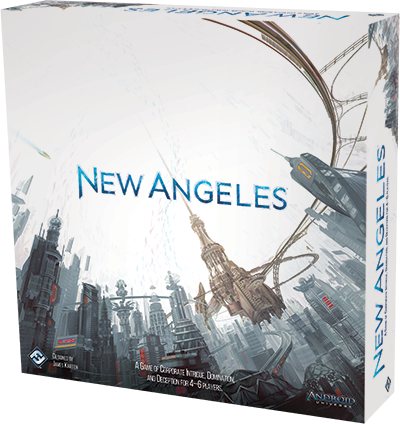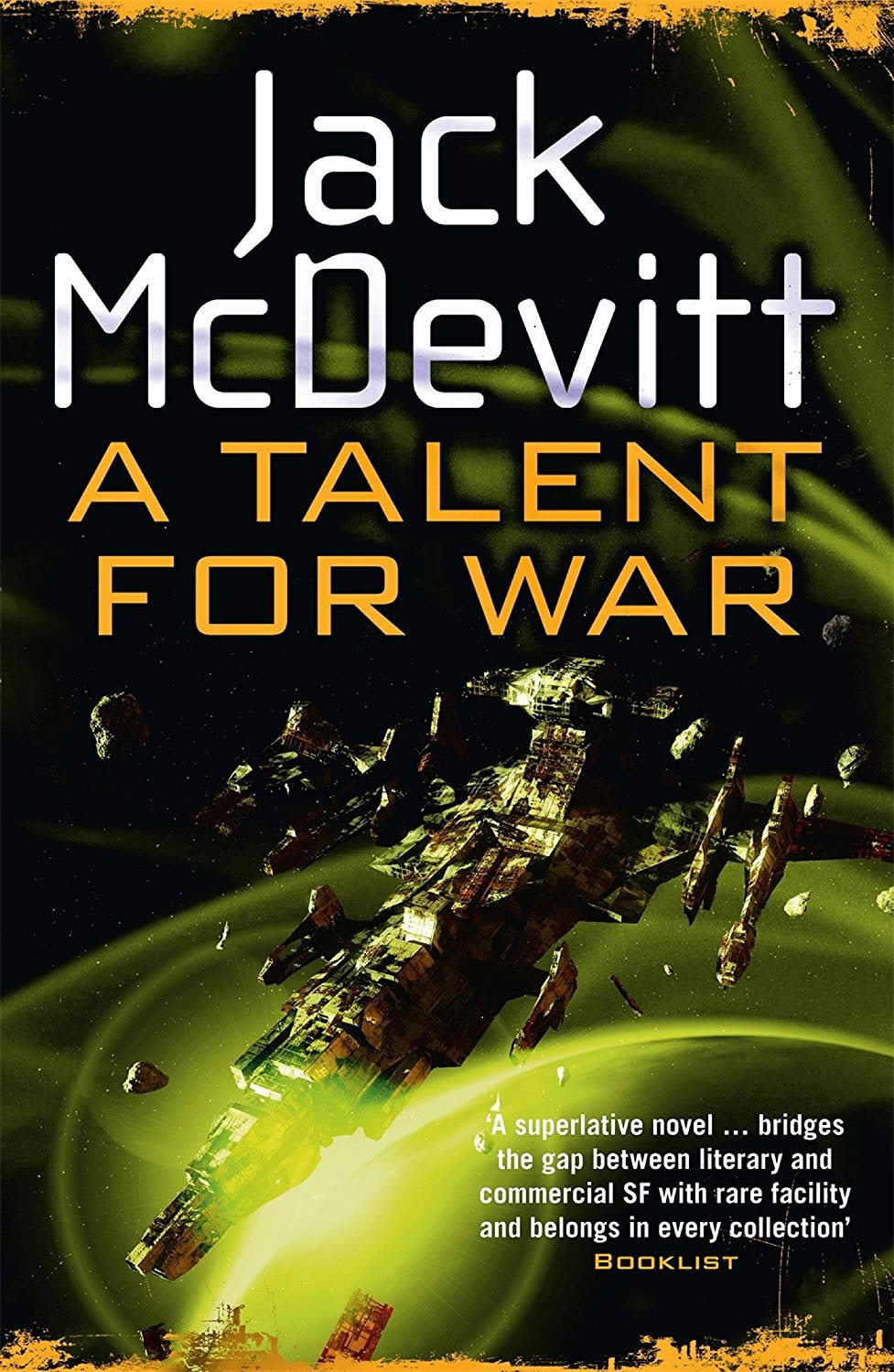 Imagine The Da Vinci Code except (a) the writing is exceptional and (b) it takes place 9,000 years in the future. Or National Treasure if the American Revolution was a space opera. Or Indiana Jones as a Star Wars movie.
Imagine The Da Vinci Code except (a) the writing is exceptional and (b) it takes place 9,000 years in the future. Or National Treasure if the American Revolution was a space opera. Or Indiana Jones as a Star Wars movie.
A Talent for War by Jack McDevitt is one of the best books I’ve ever read. So good, in fact, that after I finished it, I immediately flipped back to the first page and read it cover-to-cover a second time.
PREMISE & EXECUTION
Alex Benedict is an antiques dealer. He was raised by his uncle, an archaeologist, but they have become estranged due to his uncle’s disapproval of his “tomb robbing.” Nevertheless, when the passenger ship carrying his uncle disappears into hyperspace and never returns, Alex receives an enigmatic message from his uncle, delivered in the event of his death and describing an incredibly historic find, the details of which are too sensitive to trust to the message and have instead been left as an encrypted file at his uncle’s house. By the time Alex returns home, however, the file has been stolen and he is left with nothing but a few breadcrumbs and a tantalizing mystery to pursue.
A Talent for War is, of course, Benedict’s pursuit of that mystery.
The book opens with the loss of the passenger ship Alex’s uncle was on:
On the night we heard that the Capella had slipped into oblivion, I was haggling with a wealthy client over a collection of four-thousand-year-old ceramic pots. We stopped to watch the reports. There was little to say, really, other than that the Capella had not re-entered linear space as expected, that the delay was now considerable, and an announcement declaring the ship officially lost was expected momentarily.
Over the next few pages you get a taste – just a little sampling! – of both the rich, layered complexity of the novel and its melancholic-yet-epic scope.
You can see here that McDevitt has introduced the tragedy of the Capella in a completely personal-yet-irrelevant manner: The main character receives it as a bit of trivia on a news broadcast playing in the background; the way in which we so often learn of the myriad tragedies that afflict our world. From this simple point McDevitt builds outwards, step by step:
It’s happened before. But never to anything so big. And with so many people. Almost immediately, we had a hit song. And theories.
We delve into the people onboard who were famous and then into those who become famous because they were onboard. And the narrative moves from how the news was reported to how the event becomes history and even, to a certain extent, legend and myth.
And then, abruptly:
About ten days after the loss, I received a transmission from a cousin on Rimway with whom I’d had no communication in years. In case you haven’t heard, he said. Gabe was on the Capella. I’m sorry. Let me know if there’s anything I can do.
Tragedy and news and history and epic are all abruptly collapsed back onto our protagonist; the abstract weight of it all collapsing into something personal and painful and immediate.
This, by itself, is pretty great storytelling. But that’s not all that happens here. Through the lens of the Capella tragedy, McDevitt encodes a ton of essential world-building: how space travel works, how the human polity is organized into a confederation of colonies, how media and information technologies work, etc. And he’s also subtly establishing some of the major themes that will guide the entire book.
In just eight triumphant pages, McDevitt has completely drawn you into his world, his story, and his main character.
This short sequence, however, also demonstrates the difficulty of explaining what makes A Talent for War so great, because to at least some degree I have now spoiled the effect. One of McDevitt’s primary tools in the novel — and one which perfectly suits the nature of its narrative — is the masterful pacing, structure, and shaping of the revelation of knowledge. Thus, the more I discuss, the more I am robbing the book of some of its power.
So I will do my best at this point to speak in generalities.
At the time of his disappearance, Alex’s uncle was on the trail of a major archaeological find. The loss of his original notes forces Alex to dive in, partly following in his uncle’s footsteps and partly charting his own course. In its most basic form, therefore, A Talent for War is a mystery. (Or perhaps it would be more accurate to describe it as an interplanetary thriller.) What elevates this narrative, however, is the beautiful, multilayered texture that McDevitt lends it.
First, as we follow Alex in his investigation we become invested not only in the story of his life and the characters around him, but also in the historical story and personages he’s investigating.
Second, and perhaps most importantly, that historical story is constantly shifting. Each new piece of information that we (and Alex) learn not only adds to that story, it also transforms our understanding of what we already knew. Thus the narrative is not linear; it is instead a holographic patchwork, the parts of which are in a constant state of overlapping flux. It is not one story, it is many stories; it is a myth told and retold not only on the page, but in our own imagination. The effect is electric, forcing us not only to deeply engage with the narrative, but also to immersively walk the same investigatory path that Alex does. We are Alex Benedict, uncovering the lost secrets of cosmic history, sharing in the satisfaction – and frustration! – of watching the puzzle pieces click into place.
Perhaps the greatest triumph of A Talent for War is that we do, in fact, care — and care passionately — about the fictional history that Alex is delving into. It’s comparatively easy for Indiana Jones and the Raiders of the Lost Ark, for example, to make us care about the Lost Ark or for The Da Vinci Code to make us care about the holy grail because we are already living in the modern world, hate Nazis, and know the importance of Christianity and its lore. McDevitt has none of those advantages and must instead establish all of that from scratch. Impressively, he does it so seamlessly that you don’t even really notice it happening; you simply arrive at the end of the novel and discover that you are intensely invested in the outcome. Partly this is because McDevitt makes us care about the “historical” characters that are living the history that Alex is uncovering, but it’s also because he makes it intrinsically clear that the history is important to the “modern” world Alex lives in, and we see that reflected in every aspect of the world — politics, characters, architecture, culture. Everything.
And perhaps the most daring thing McDevitt does is to NOT provide an authoritative answer to every question. Thus we are forced to become active readers, piecing information together for ourselves and reaching conclusions that the narrative doesn’t deliver to us on a platter. In some cases, however, there is simply… enigma. Mysteries for which there is no solution. It is these little patches of uncertainty which lend the final patina of reality to Alex Benedict’s world and the immense depth of history which lies beneath it, for certainty and absolute truth can only be found in that which is artificially constructed.
As with the beginning of the novel, so at the end we find ourselves standing atop a pinnacle of myriad, kaleidoscopic complexity. One which is thrilling and epic, while simultaneously being melancholic and intensely personal. The personal is reflected into the epic, giving it humanity and truth; the epic is reflected into the personal, making it grand and true. Thus, like a house of mirrors, the totality somehow eludes your grasp.
Which is why you, too, might find yourself immediately flipping back to the beginning of the book and reading it once again.
If you do, what is most remarkable is that you will find yourself somehow reading a completely different book than the one you just finished. Everything which you have learned in your first journey along this road will cast a fresh light on each step of the story, utterly transforming your understanding of it. Even as you once again approach the end, the totality of what you have learned on your second reading will change your perception of what you thought you knew before.
And that is the mark of greatness.
GRADE: A+
A WORD ABOUT THE SEQUELS
Fifteen years after A Talent for War was published, Jack McDevitt returned to Alex Benedict and began writing sequels (starting with Polaris in 2004).
These are good books. They’re fun books. There are not infrequent moments when you’ll find yourself caught up in both the action and the enigma, unable to put the book down and staying up far later than you’d intended to compulsively turning the pages.
But sadly (and I say this mostly so that you can prepare yourself) they pale in comparison to A Talent for War.
First, they lack the incredibly beautiful, multilayered texture of the original. They are far more linear in their construction, with one revelation following another but never truly forcing you to revisit that which you already knew.
Second, they become increasingly formulaic in both their plots and prose.
Third, and perhaps least forgivably, they become lazy.
Where A Talent for War delves deep into the historical material being researched, allowing you to compellingly follow in Benedict’s footsteps as he pieces together the lost secrets of the past, the sequels generally just provide a rough summary of findings. Not only is this less thrilling, but it also means that the sequels lack the double narrative of A Talent for War: Where the original not only invested you in the story of Benedict but also the story of those historical personas he was pursuing in his research, the sequels lose that extra dimension and become lesser works as a result.
Most frustrating, however, is a complete lack of care for continuity. Contradictions abound, sometimes within books, but even more frequently between books in the series. For example, one book (Firebird) ends with a character stating that such-and-such an event will happen four years from now. The next book, Coming Home, is dated one year later, but the event has already inexplicably taken place. At another point in the series, the characters all appear to simply forget that the epochal events of Echo (the fifth book in the series) happened. The conclusion of A Talent for War, in fact, is apparently retconned out of existence, although it remains completely unclear to me whether this was an intentional choice or just another glitch. There even comes a point where one of the characters says, “How could we have missed this?!” while ignoring the fact that they literally discussed this very thing just fifty pages earlier.
This becomes a constant, frustrating grind on the series, in large part because it is not just a matter of trivia; these continuity errors cluster around the major events of the plot, sapping credibility and the suspension of disbelief from the characters, world-building, and narrative.
I do not, however, want to leave you with a completely (or even predominantly) negative impression of these books. Like I said, they’re fun. I enjoyed them. You’ll likely enjoy them, too. But they ultimately do not live up to the astonishing triumph of A Talent for War.

